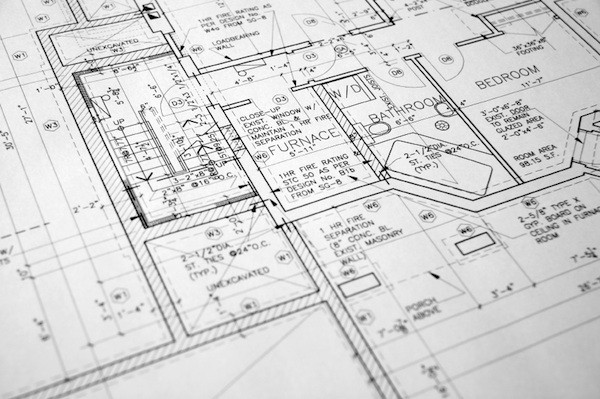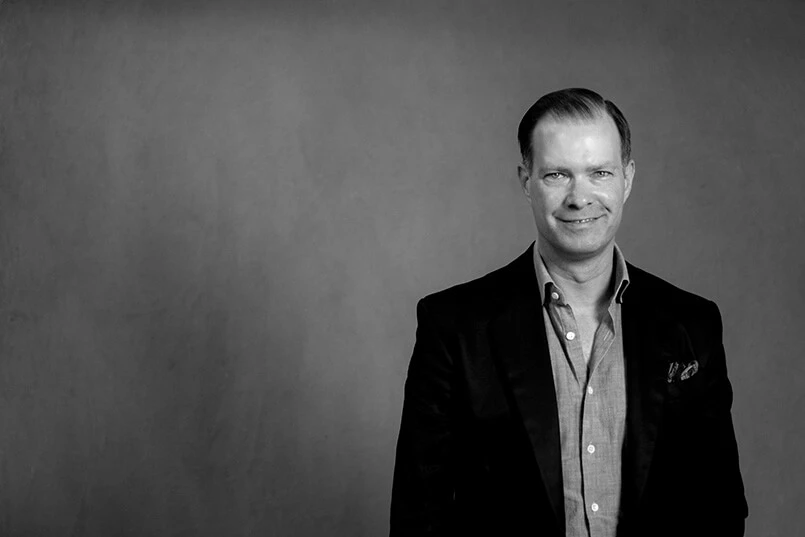In the 12 years TrinityP3 has been providing training and independent advice to advertisers on production and creative costs, we have found that many of these production blowouts are due to poor supplier management, rather than naked greed on behalf of the suppliers. Of course, this does not mean there are no longer sharks in the advertising waters, it just means armed with knowledge on costs and processes, you are less likely to get attacked, or worse still, eaten alive.
Interestingly, there is another industry, which suffers from the same cost perceptions as the advertising production industry and that is the building industry. By way of demonstration, let’s use the building industry as a metaphor for advertising production. Both advertising and the building industry have a creative / design element, in both cases the production is undertaken by a third supplier under the direction of the designer and in both cases the client ends up paying more than they allowed.
In this scenario the architect represents the advertising agency or design company. The builders are the production houses in film and print and the subcontractors are the smaller suppliers such as photographers and the like.
Lets proceed step-by-step through a production to see where the parallels exist and to identify the ways to reduce the overall cost of the project.
1. I need you to design a house for me.
Imagine you call an architect and asked him to design a house for you. That’s it. You need a house. Now no-one is silly enough to do that, because apart from defining what you want the house to do, you would also set some limitations on the design such as cost, size etc.
But many times, agencies have been briefed with as much information as ‘design me an ad’.
So first off, you need a brief. It has to be written. The brief should prescribe all elements that are required – emotional, rational, practical and functional. But more importantly, it should contain all of the constraints the creative team needs to operate inside such as cost, duration / size, tone of voice, deadline.
Without a written brief, you have no agreed reference point to judge the agency’s solution and hold them accountable if they don’t deliver.
2. Great, can you build it by Monday?
So finally you get the design for your house. It is perfect. But it has taken so long to design, to meet your deadline set weeks ago, you need the house built by Monday and it is 3 pm Friday afternoon.
The fact is “time is money”. You rarely if ever hear of an agency missing a media deadline. But to meet this deadline takes time and or resources and resources cost. The less time you have the greater the premium you will pay. This premium is not always obvious, but it is there.
While retailers traditionally work on tight deadlines this does not mean you should not have an annual plan and have the agency working ahead of this plan. While the details may be confirmed at the last minute, at least the concept development and the production planning can occur ahead of the timeline allowing any efficiency to be realised.
So how much time should be allowed? How much time do you have?
3. Can we get a 2nd quote or a 3rd…?
Having approved the design, the architect gets a builder he knows and recommends to quote your job. The builder comes back with a quote that is 50% over budget. This is the budget the architect agreed to in the brief.
So you ask the architect to get three competitive quotes. The architect says that to get the job done right you need the best builder and you only get what you pay for and if you pay less you will get a cheap job. You insist and they get two more quotes.
The competitive quotes are all within 10% of the original quote, so you could end up paying 40% – 60% over your original budget. What are the options?
Call the architect to account to deliver a design that meets the brief, including the budget. Or lower your expectations so costs can be saved. Or ask for quotes from a range of builders, beyond the select few the architect usually works with. In extreme cases, even consider sourcing your own builder.
How does this relate to advertising? Do we need to say anymore?
4. It’s more than we thought, can you explain what these costs are?
The architect presents the quotes to you, neatly printed out on his letterhead, with the major cost centres broken down, like carpentry, bricklaying, plumbing etc. Of course, you could approve the estimate, or you could ask to see the breakdown of each of these cost centres.
You can ask for the breakdowns, but do you have the knowledge to make any meaningful interpretation of these? Very few of us are plumbers or carpenters or electricians. So how are we going to know what is needed and what the industry costs are for these services and materials?
In advertising it is even more difficult. Over time and with experience you can pick up the average charges for various services, but production is constantly impacted with new technology, which affects cost structures and rates.
If the knowledge does not exist within your organisation, then you should source the knowledge from third party suppliers, preferably independent suppliers, to provide a check. (See point ten)

Having analysed the costs involved, the next step is to identify what costs are essential and what are not. The architect will tell you they are all essential, otherwise they would not be included. But the architect has a creative agenda that is not necessarily related to cost control.
For instance, would a granite bench top, which is more durable and half the price of the recommended marble top, affect the functionality or even the aesthetics of the kitchen?
The same conversations can be had with the agency in relation to costs. What is the cost implication in regards to choosing a particular stock for printing, and is a cost effective alternative available? Instead of shooting on 35 mm film can we shoot the television commercial on 16 mm film or digital video? What is the impact of shooting that catalogue digitally rather than on film?
In every advertising production, be it print or electronic, there are a large number of variables, each with a cost implication. To assume that each of these has been considered before being recommended would be to assume that the agency is driven by delivering the best solution possible, not just the most creative. After all, their job is to provide the creativity to your advertising. It is your job to ensure this is achieved as cost effectively as possible.
6. What if I we source these items ourselves?
In the building trade they are known as prime cost items. These are all the major purchases that the builder passes on at “cost”. Supplying a list of the prime cost items in the quote means you have an opportunity to source these costs yourself and potentially achieve savings.
In regards to advertising, it is harder to identify the prime cost items. One of the most obvious is printing. Most advertisers are sourcing their own printing to avoid the commission or mark-up agencies place on this cost.
It is not just printing, technology has made many of the production processes traditionally managed by agencies more accessible and therefore more competitive. Pre-press, page make up, digital asset management, retouching, material dispatch are all services that can either be performed in-house with a computer and a suitable operator or outsourced at a rate, usually more competitive than traditional agency price structures.
Outsourcing services also means you have opportunities to achieve the same economies with suppliers the agencies achieve, but in this case those savings are returned to you.
7. Well, if it’s just a contingency, we’ll get it back won’t we?
Contingencies don’t happen with new homes as much as with renovations. With renovations there is an unknown element (the state of the existing building) that has to be allowed for in the estimate.
With advertising, always assume you are renovating. If there is not a contingency in the photography, there will be in the printing, or the casting, talent fees, Film Company or postproduction. The problem with contingencies is not the ones you can see, but the ones you don’t even know are there. The hidden contingency.
If you don’t know it is there, how can you ever hope to get it back if it is not used? What these fees should be called is mark up, because almost no one ever gets them back unless you are willing to audit your agency or other creative suppliers.
The most common system, fixed quotes, is not the best system – unless the quotes are detailed and transparent and you have the expertise to assess the quotes. (See point four) If not, then the best system is cost plus where the actual cost plus an agreed margin is charged to actuals not to estimate. Where you have the right to audit the costs to ensure you only pay for what you get. And where you know how much your agency is making.
8. We’ll get planning approval once the job is finished, okay?
So the builder has completed the house and you call the council to get planning and building permits. It really sounds idiotic, doesn’t it? But compare this to the advertisers that took a finished advertisement to show the general manager for the first time and ask their approval.
If you are managing a large number of stakeholders, then make sure they are part of the approval process throughout the process, not just at the end. A client had shot a television commercial and asked if the lead talent could be changed without re-shooting the spot. Why? Because the managing director didn’t like the talent selected.
Ultimately, you want to minimise the number of approval stages by having all stakeholders approve stages before providing feedback to the agency. In this way you reduce the number of changes and therefore the cost.
9. What do you mean extras, I didn’t approve any extras?
The extras are where builders can really make their money. They quote competitively to get the job, but then charge full rates whenever you change your mind.
It is the same with advertising. (The difference with building is that in advertising not every project is put out to competitive tender). But one similarity is how changes to the brief always lead to significant additional costs.
There are two ways to manage this. Firstly, every time there is a need for a change that incurs additional costs, have the change estimated and approved before the cost is incurred. Secondly, don’t make any changes.
Of course there will be people who say there is never time to get the estimate done and approved during the production process. (For those people see point one.) We had one client who took pride in having the lowest agency and production rates around. When we did an audit on their productions we found they incurred up to 75% additional costs in extras and changes, incurred and approved in the heat of production.
10. Contact TrinityP3 to provide you with an independent assessment of your production processes and costs.
TrinityP3 provides advertisers with knowledge, advice and training on television, digital, and print production processes and costs. We have industry average benchmarks for all costs involved in the creative production process.





2 thoughts on “A blueprint for reducing your advertising production costs”
Brilliant post. One of the big things I find is that clients don't want to tell the agency or the creative supplier the budget up front. Some worry that it will mean they wont get a quote that is cheaper or that it is in some way going to get them screwed over.
By understanding that there is a creative and production solution for every budget helps clients understand that what it really comes down to in the end is a value judgment – for your budget who is delivering the best design and the best service as opposed to it being a stab in the dark as to who has come closest to your imaginary budget.
I know Anne, this is always the concern and for procurement it is counter to competitive tendering. But the problem is that this ignores the primary cost driver of the production which is the concept itself. How many times have you seen a great idea that cannot be appropriately executed for the budget. It then gets squeezed and squashed into the budget and no-one is happy with the result. It is false economy. The other extreme is where there is no idea and it is only saved by huge investment in the execution to try and at least create entertainment. Either way the whole process misses the point which is why are you creating and producing this in the first place? What is the value. Cost management should not be about squeezing price it should be about eliminating waste and excess and measuring effectiveness. All of this can be achieved if there is a will to do it.
Comments are closed.